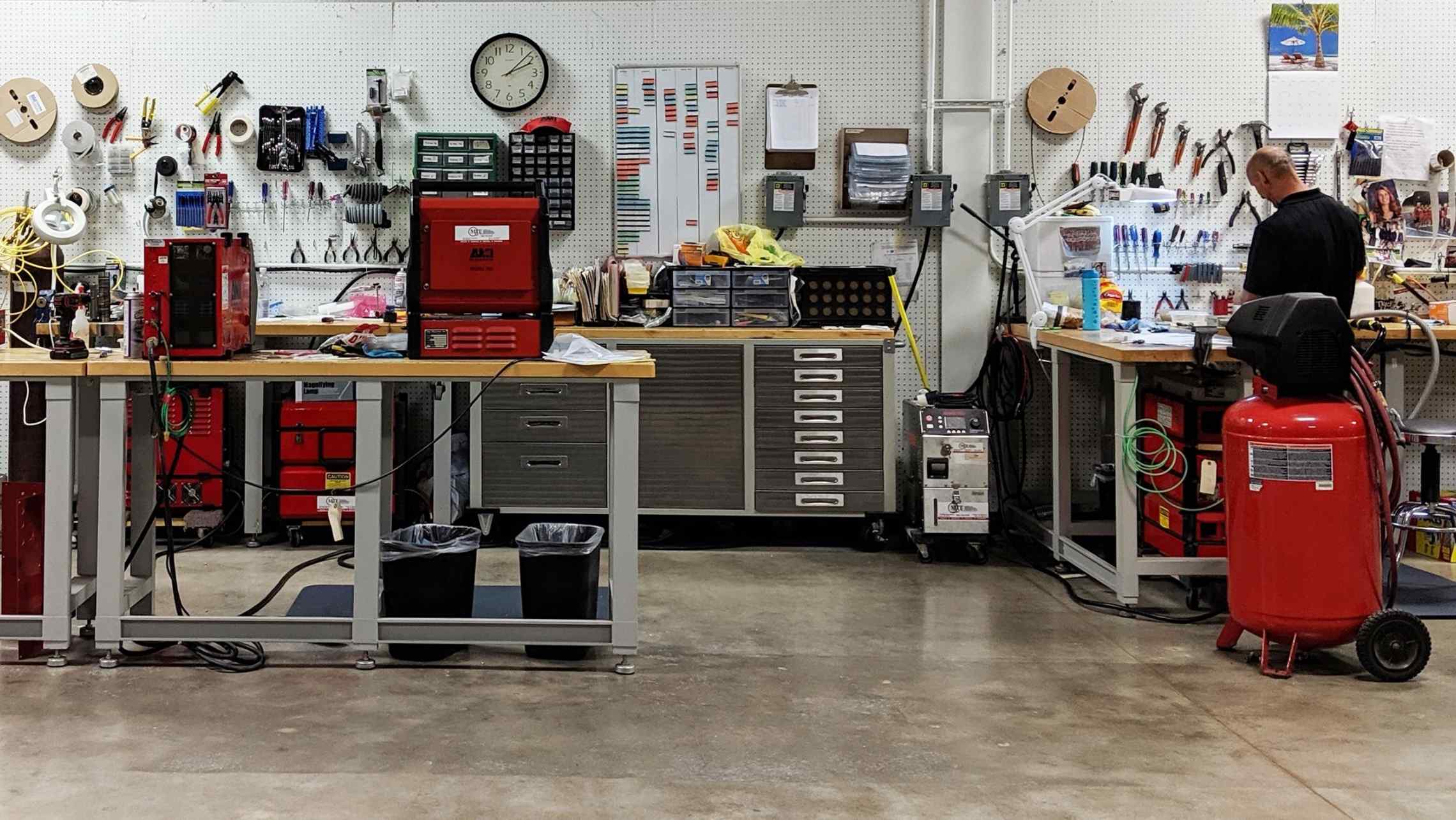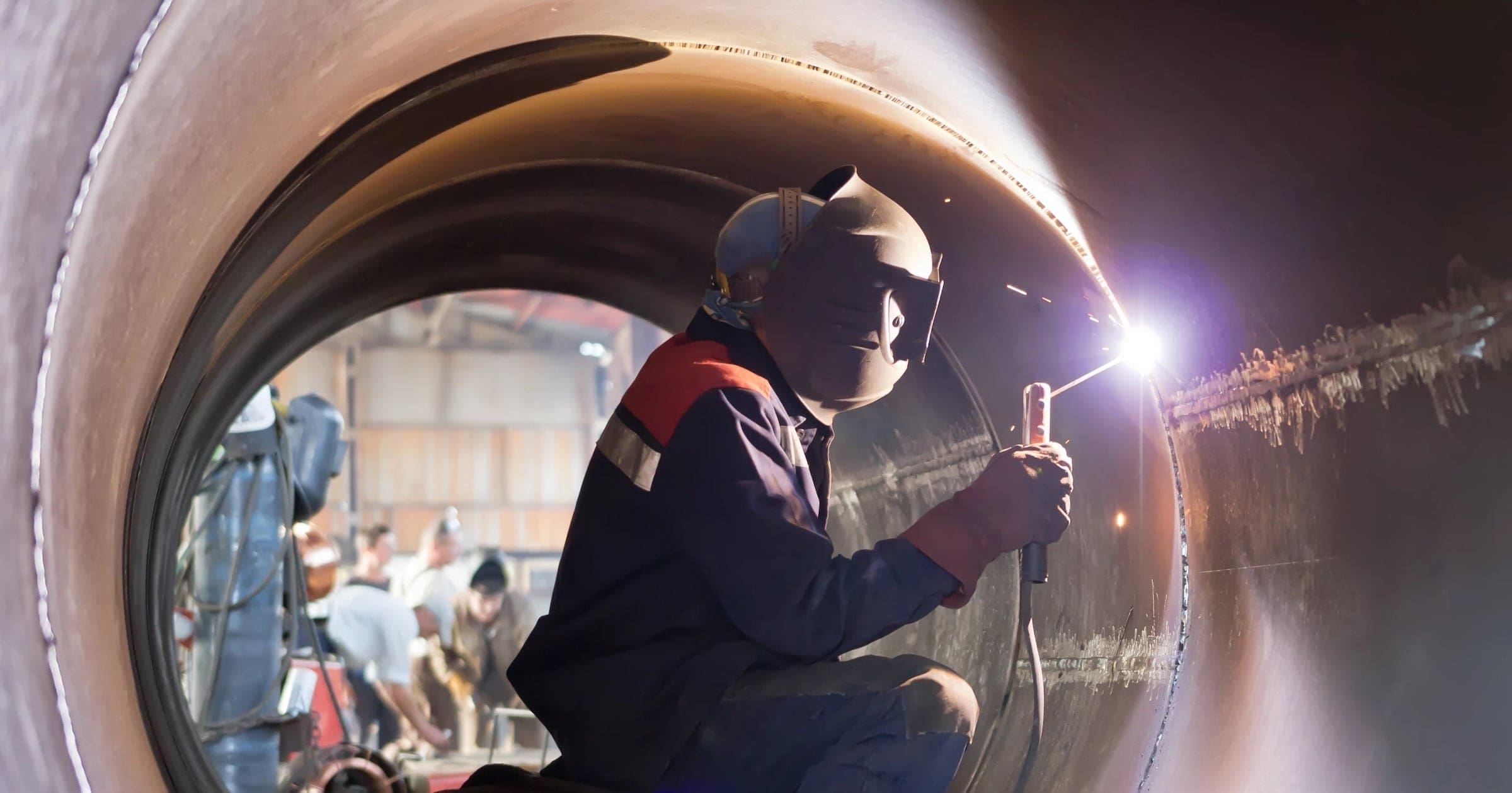All About Welding: Trick Insights Into Techniques and Best Practices for Success
Welding includes a variety of strategies, each suited for specific products and applications. Recognizing these approaches, such as GMAW, SMAW, and TIG, is necessary for attaining ideal outcomes. The appropriate tools and security techniques can not be forgotten. As preparation and fixing play essential duties in the welding procedure, mastering these elements can substantially boost the quality of the last product. What are the vital elements that ensure an effective weld?
Recognizing Various Welding Strategies
Welding strategies incorporate a variety of methods, each fit to certain applications and products. Among the most usual methods are Gas Metal Arc Welding (GMAW), Protected Metal Arc Welding (SMAW), and Tungsten Inert Gas Welding (TIG) GMAW, also recognized as MIG welding, is prominent for its speed and convenience, making it excellent for slim products. SMAW, or stick welding, is preferred for its simpleness and performance in outside environments, specifically with thicker metals. TIG welding provides accuracy and control, making it appropriate for detailed work and non-ferrous steels (Montana Mobile Welding and Repair Fabrication). Each technique has its one-of-a-kind advantages and considerations, allowing welders to choose the very best technique based on the project's demands, material type, and desired results. Recognizing these methods is necessary for successful welding
Vital Welding Equipment and Devices
While numerous welding strategies call for certain abilities, the appropriate tools and tools are equally crucial for accomplishing top quality outcomes. Necessary welding tools includes welding equipments, which vary depending on the technique-- such as MIG, TIG, or stick welding. Protective equipment, consisting of aprons, gloves, and headgears, warranties security and convenience throughout the process. In enhancement, clamps and fixtures help safeguard products in location, making sure precision in welds. Consumables like welding rods, cord, and protecting gas are also essential components that affect the high quality of the weld. Tools such as grinders and cutters promote surface area prep work and post-weld completing, adding to an expert outcome. Buying top quality devices inevitably enhances the effectiveness and efficiency of welding jobs.
Safety And Security Practices in Welding
Proper safety methods are vital in the welding industry to protect workers from prospective risks. Welders have to put on suitable personal protective devices (PPE), including safety helmets with appropriate shading, handwear covers, and flame-resistant apparel. Appropriate air flow is crucial to reduce exposure to dangerous fumes and gases created throughout the welding process. In addition, employees should be learnt the proper handling of welding equipment to avoid mishaps. Fire safety actions, such as keeping combustible products far from the welding area and having fire extinguishers readily offered, are essential. Regular inspections of tools and workspaces can aid determine potential risks prior to they result in accidents. By sticking to these security methods, welders can develop a safer working atmosphere and decrease risks linked with their profession.
Preparing Materials for Welding
Preparing products for welding is an essential step that significantly influences the quality and integrity of the end product (Welding). Appropriate preparation includes cleaning the surface areas to remove contaminants such as corrosion, oil, and dirt, which can jeopardize the weld. Techniques such as grinding, fining sand, or utilizing solvents are commonly employed to attain a clean surface. In addition, ensuring that the materials fit with each other snugly is important; spaces can cause weak welds. It's likewise essential to take right into account the placement and positioning of the components, as this will certainly affect the convenience of welding and the last outcome. Lastly, choosing the suitable filler product and ensuring compatibility with the base steels is crucial for attaining solid, sturdy welds
Tips for Getting High-Quality Welds
Accomplishing high-grade welds requires focus to information and adherence to ideal techniques throughout the welding process. Proper joint prep work is necessary, ensuring surface areas are cost-free and tidy from impurities. Selecting the appropriate filler material and welding strategy based upon the base metals is important for ideal bonding. Keeping constant travel speed and angle while welding can protect against defects and promote uniformity. Additionally, regulating heat input is essential; too much heat can cause bending and weakened joints. On a regular basis inspecting the welds during the procedure enables prompt adjustments if essential. Employing ideal post-weld treatments, such as cleaning and tension relief, can enhance the toughness and stability of the weld, eventually guaranteeing a successful end result.
Troubleshooting Common Welding Issues
Welding commonly provides difficulties that can affect the quality and integrity of the last item. Common issues such as porosity, irregular weld grains, and overheating can develop, each needing certain troubleshooting methods. Understanding these issues is crucial for welders to improve their skills and achieve perfect results.
Porosity Problems Described
Porosity can commonly be neglected, it remains a crucial problem in welding that can jeopardize the honesty of an ended up item. Porosity refers to the presence of little gas pockets within the weld grain, which can weaken the joint and lead to premature failure. This problem commonly occurs from contaminants, dampness, or incorrect shielding gas coverage during the welding process. To minimize porosity, welders should confirm that the base products are clean and dry, utilize appropriate shielding gases, and maintain constant welding criteria. Frequently examining the devices and atmosphere can likewise help determine prospective problems prior to they show up in the weld. Addressing porosity successfully is essential for accomplishing solid, long lasting welds that fulfill high quality criteria.

Irregular Weld Beads
Inconsistent weld beads can greatly affect the high quality and toughness of a completed item. Different variables add to this issue, consisting of improper travel rate, wrong amperage settings, and irregular electrode angles. When the welder moves as well quickly, a grain might show up slim and do not have penetration, while relocating too slowly can trigger extreme build-up. Furthermore, making mig welders for sale near me use of the wrong amperage can result in either damaging or extreme spatter, both of which concession read this weld integrity. The welder's technique, such as irregular torch movement, can likewise cause unequal grain look. To reduce these troubles, welders must concentrate on maintaining stable, regulated activities and ensuring proper devices settings to accomplish uniformity in their welds. Uniformity is key to accomplishing reliable and solid welds.
Overheating and Bending Issues
Too much warmth during the welding process can lead to considerable getting too hot and warping problems, affecting the architectural honesty of the work surface. These problems frequently manifest as distortion, which can endanger positioning and fit-up, making additional assembly testing. Aspects contributing to overheating consist of the option of welding specifications, such as voltage and take a trip speed, as well as the kind of material being welded. To alleviate these concerns, welders should preserve constant traveling rate and proper warm input while checking the workpiece temperature. Additionally, pre-heating or post-weld heat treatment can assist ease anxieties brought on by fast cooling - Fabrication. Routine examination and adherence to ideal practices are important in avoiding getting too hot and ensuring the long life and reliability of bonded structures
Regularly Asked Concerns
What Are the Occupation Opportunities in the Welding Industry?
The welding industry uses diverse occupation possibilities, consisting of positions as welders, instructors, engineers, and examiners. Specialists can work website here in production, construction, aerospace, and auto industries, taking advantage of strong need and competitive incomes in various functions.
How Can I Enhance My Welding Speed Without Giving Up High Quality?
To enhance welding speed without compromising top quality, one must exercise reliable techniques, preserve tools, enhance setups, and enhance hand-eye control. Routine training and looking for comments can likewise substantially contribute to achieving quicker, top quality welds.
What Qualifications Are Available for Welders?
Many certifications exist for welders, including those from the American Welding Society (AWS), the National Facility for Construction Education And Learning and Research Study (NCCER), and numerous industry-specific companies. These qualifications boost employability and show skill proficiency.
How Does Welding Influence the Properties of Metals?
Welding influences the properties of steels by changing their microstructure, which can bring about adjustments in toughness, hardness, and ductility. Heat input and cooling rates during the procedure greatly affect these product features.
Can I Bonded Dissimilar Metals Together?
